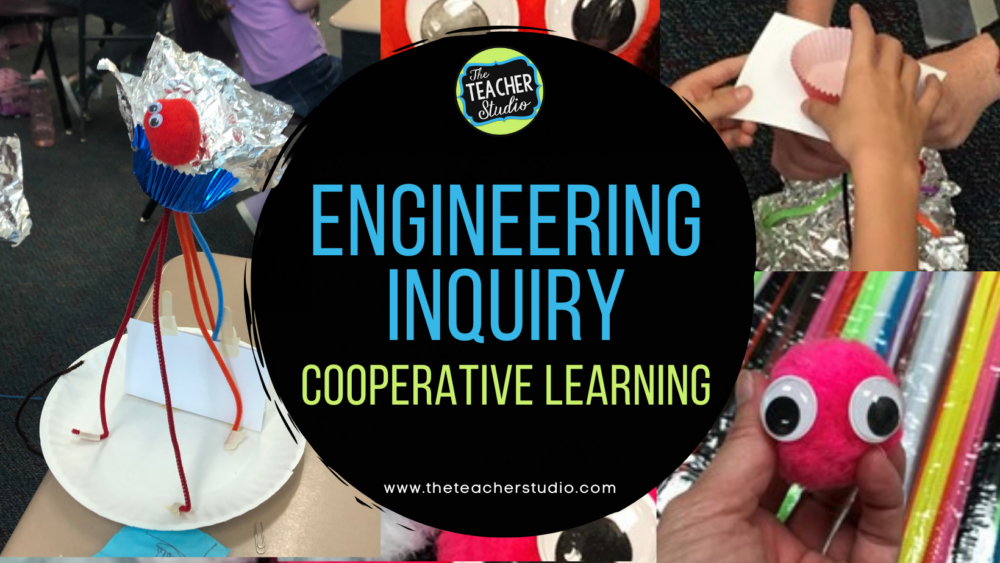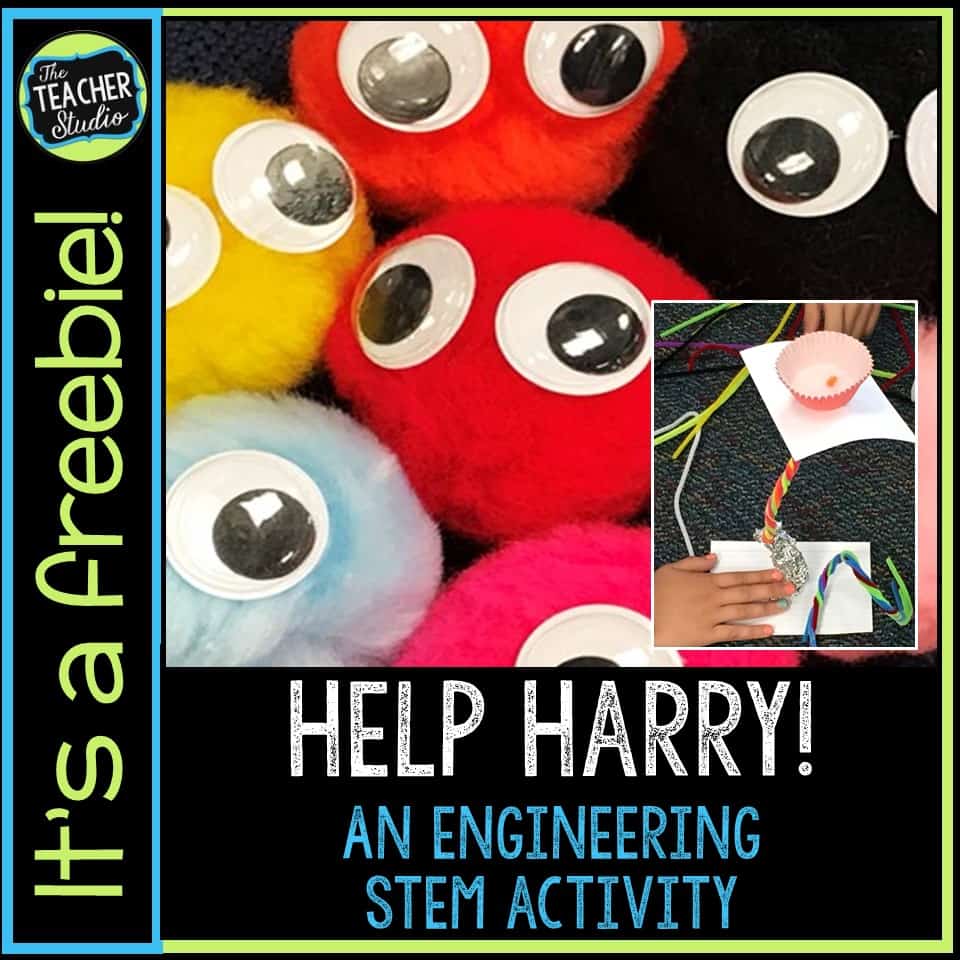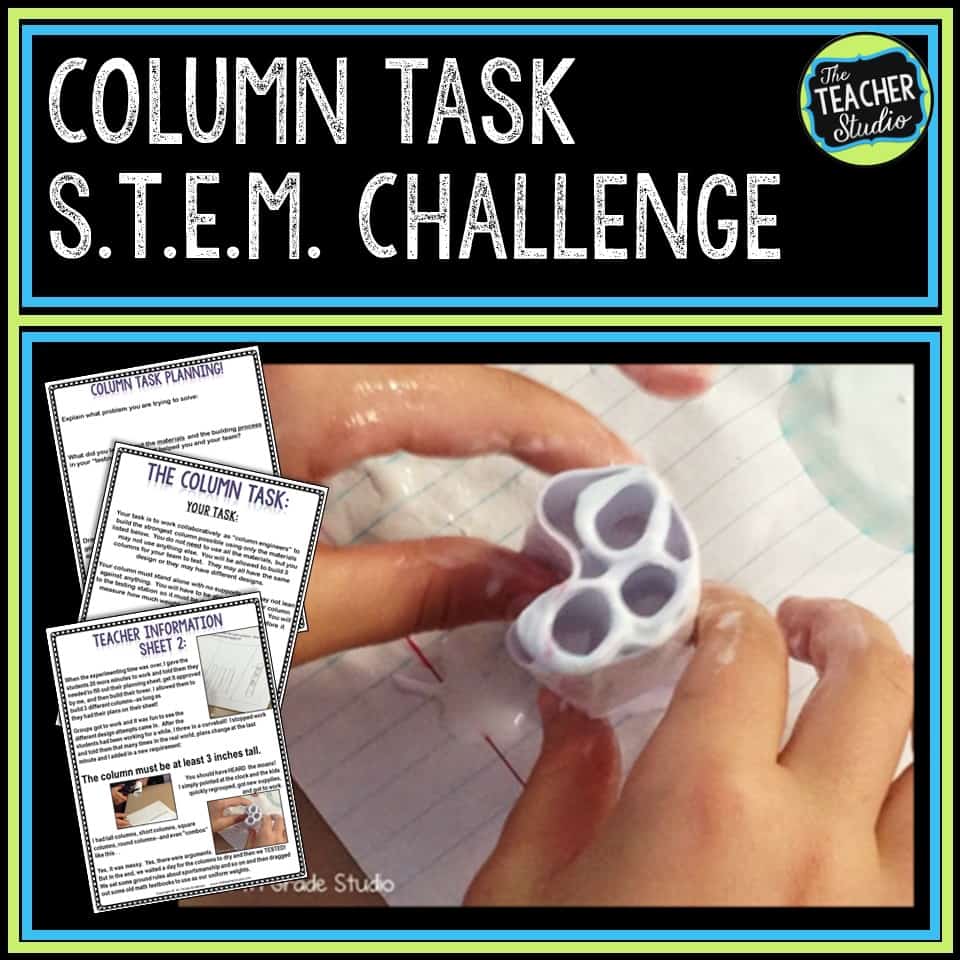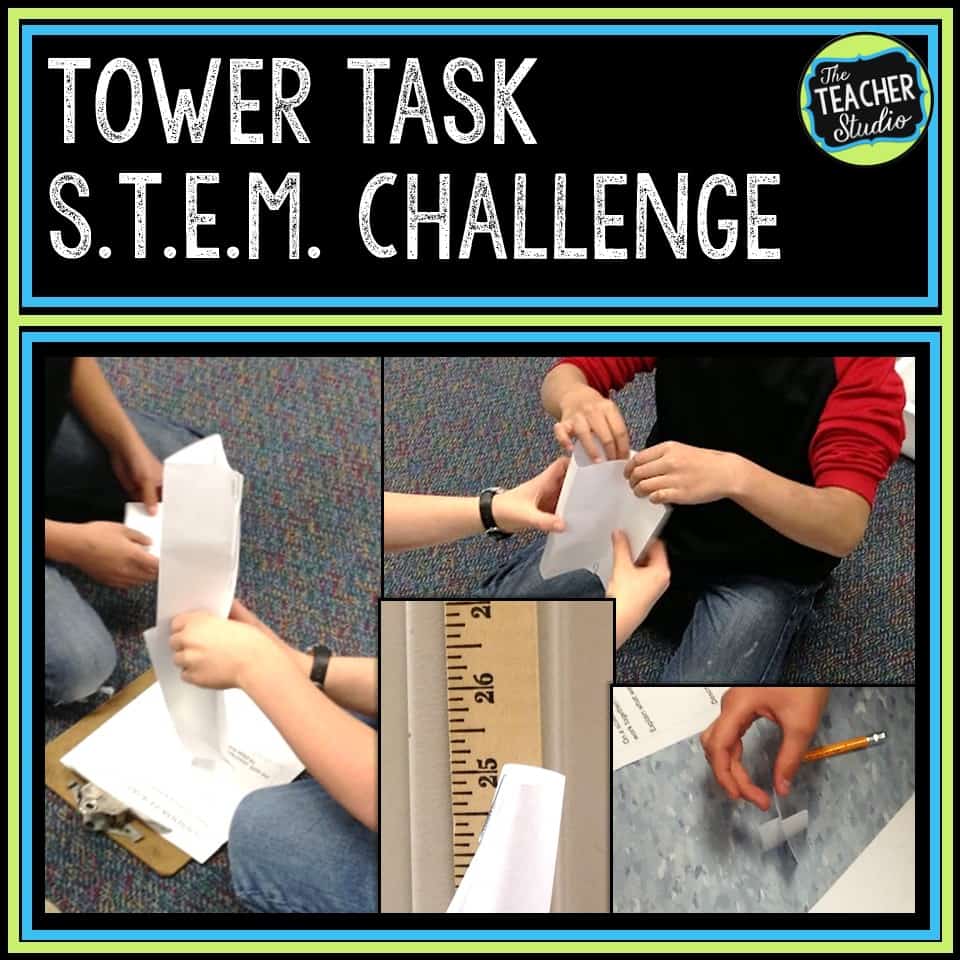STEM Engineering activities in elementary school? Yes!
Today we tackled day 3 of school, I wanted my students to apply some of the concepts we have been talking about–mostly about helping each other and being receptive to help. I decided to design a little STEM engineering challenge that would require them to stick to a tight schedule, come up with a plan, try it out, cooperative, test their idea, then reflect on the process…all while relying on each other for help. As our district is moving toward the Next Generation Science Standards, this is a perfect “kick off”. What engineering standards am I looking at?

What engineering design challenge did we tackle?
I wanted to create a task that was easy to prep, engaging for students, and had a high success rate.
I think I accomplished it!
What is the situation?
Help Harry.
When I first told my students that we needed to help Harry, they looked at me like I was crazy. (They will soon see that this is not an atypical situation in my room!) They started looking around quizzically and you could feel the excitement building. Finally, I caved. I introduced them to Harry.
Harry is a puffball (We have had 7 of them perched above our Smartboard and no one has said a word!) who needs a new “perch” so that he can see out over the class more safely. I told the students that I would give each team a bag of supplies and a schedule. I showed them their supplies (pipe cleaners, about 12 inches of tape, two muffin liners, a piece of aluminum foil, and two index cards) and told them to think about a nice safe place for Harry to hang out.
After 5 minutes of talking and planning without supplies, I set the timer for 15 minutes and watched the teams get to work.
I was SHOCKED at the wide range of strategies–and how much “re-engineering” took place so willingly! We will talk more about that tomorrow. We will discuss how important it is to try, test, revise, and test again. This is important whether it is in science, making predictions in reading, or elsewhere!
This group was SO excited about their plan and couldn’t wait to see if Harry would be safe in his perch! (He was…so no worries)
I loved hearing the cheers echo across the room when the 15 minutes was over and I passed out the “Harries” to each team. Every single team was able to test, modify, and support a Harry!

Time to Evaluate our Engineering Challenges!
When the testing and celebrating was over, we took some time in teams to evaluate how we did in all the areas we had talked about before we started. I was pretty pleased to see how honest they were! This was a great way to kick off a year of self-assessment strategies. It was a great way to show my students that taking the time to reflect on learning and teamwork is so important.

It was a great discussion starter, collaboration-teaching, science skill-building half-hour of FUN! See what you think! Grab the freebie if you are interested and tweak the contents of the supply bag to be whatever you have on hand! This time, I used a piece of foil, about 12 pipe cleaners, 12 inches of masking tape, two cupcake liners, 2 index cards, and a popsicle stick. I considered using paper clips, a piece of yarn, a small paper cup, or a small paper plate. The task can be done using whatever you have! Want to try it yourself? Just click the image below or RIGHT HERE to take you to the freebie handout pictured above.Want to pin this for later?
Want this STEM FREEBIE with all the details? CLICK BELOW

Want to see a few more STEM engineering activities? Try these!


Interested in a few more science posts?









